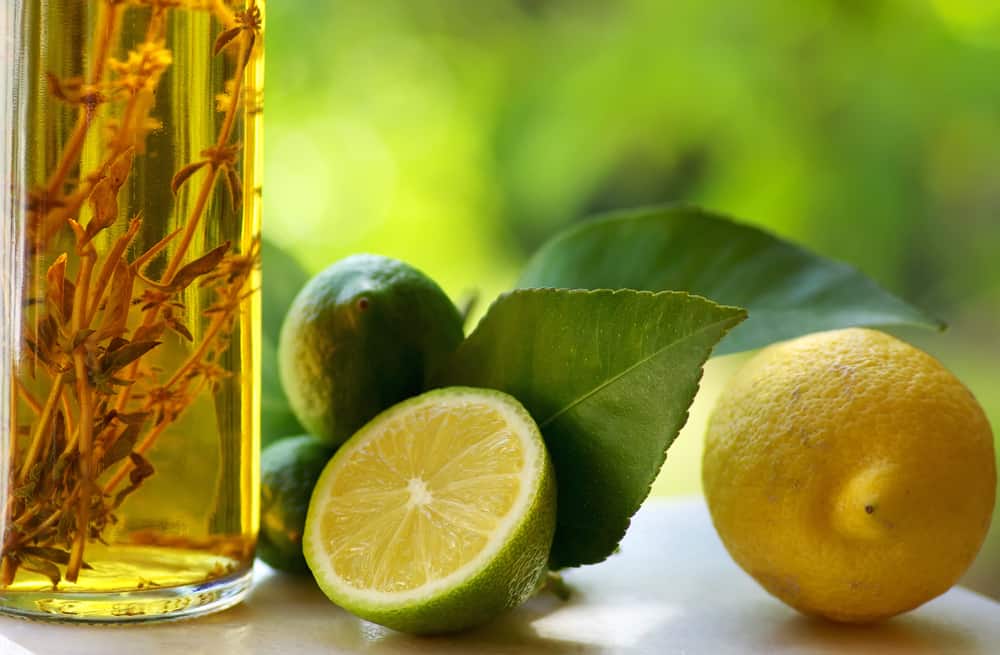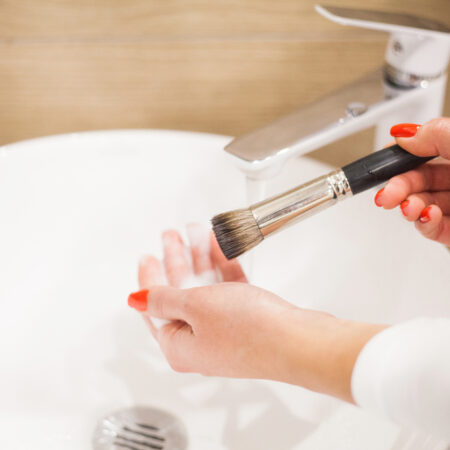You probably don’t need us to tell you that you need to clean your makeup brushes on a regular basis. But will that stop you from going weeks (or even months) on end without giving them a quick wash? If you’re anything like the average person, the answer is almost certainly a resounding no — although the fact you’ve stumbled across this article is a positive sign that you might be a little different.
But what if we could make the whole process a lot more convenient and fun for you, all without you having to shell out a small fortune? A DIY makeup brush cleaner can achieve all that (although some people might disagree with the part about it being fun). Here’s everything you need to know about how to make your own and start using it.
How to Make a DIY Makeup Brush Cleaner
You’re probably not here for the theory about why a DIY brush cleaner is a good idea, so let’s get straight to the juicy stuff. How exactly can you go about making your own solution? You might be surprised at just how easy this process is — chances are that you can start right now using ingredients you already have in your kitchen.
Apologies for those of you who were hoping to procrastinate.
We’ve even included five different methods, so there should definitely be something that takes your fancy (or some ingredients that match what’s in your cupboards). Don’t say we’re not good to you!
As you’ll soon notice, a lot of the ingredients crop up time and time again — if you’re feeling adventurous, you could even experiment with your own variations.
Method 1: Dish Soap and Olive Oil
Let’s start off with the method that has the simplest, most humble ingredients of all: dish soap and olive oil. Chances are that anyone reading this already has both of them in their kitchen, although if you don’t, Mrs. Meyer’s is a gentle dish soap choice. Although you can substitute the olive oil for another type of oil if necessary, we recommend sticking with a high-quality extra-virgin olive oil — more processed oils won’t have quite the same moisturization and health benefits.
As for the dish soap, any brand will do. It will do the bulk of the job in getting rid of the makeup, while the olive oil loosens the makeup and doubles as a moisturizer for the bristles.
Simply put a few squirts of both substances into a bowl or onto a plate ready for your brushes.
Method 2: Lemon and Vinegar

If you’ve ever dipped your toes into the water of DIY cleaning solutions, you’ve almost certainly come across the classic combination of lemon and vinegar. Since vinegar has antimicrobial properties and lemon is a natural antibacterial, they make a formidable combination — plus, the scent of lemon manages to drown out the less pleasant vinegar smell.
First, simply put two tablespoons of vinegar into a cup of hot water and dip your brushes in, before rinsing them in lukewarm water. When you’re done, rub them against the lemon for good measure.
Method 3: Baby Shampoo and Apple Cider Vinegar
Makeup brushes are made of bristles that loosely resemble hair, so it stands to reason that a substance designed to clean our hair would also work with them.
However, we definitely don’t recommend using adult shampoo — baby shampoo is specially made with more gentle ingredients and is therefore less likely to ruin the condition of your brush.
Although we recommend apple cider vinegar, there’s no reason you can’t use another type of vinegar instead — just opt for something high-quality to keep your brushes in good condition.
Around one tablespoon of vinegar, two tablespoons of water, and a healthy squirt of the shampoo should be enough to do the trick.
Method 4: White Vinegar, Dish Soap, and Sweet Almond Oil
Yes, we’re back at it again with the dish soap. But you’d struggle to find a more convenient and affordable ingredient, so you shouldn’t be complaining!
This time, you’ll be mixing together a tablespoon of white vinegar (again, use a different type of vinegar if you want), a tablespoon of your dish soap of choice, and a tablespoon of sweet almond oil (switch to olive oil if you prefer).
The substances above combine to make an effective yet gentle mixture that should bust the residue on your tools in no time at all. White vinegar is a disinfectant that’s often used in DIY cleaning solutions, so it’s an obvious choice here — in fact, it’s so effective that you need to be careful you don’t accidentally add too much.
Shake everything together in a jar to ensure it’s well-mixed. Ta-dah! You have your readymade DIY solution.
Method 5: Hair Conditioner and Dish Soap
Our fifth and final method provides yet another use of our old favorite ingredient, dish soap. Only this time, you’ll be combining it with a hair conditioner.
Since conditioner is a much gentler product than shampoo, you don’t have to opt for the baby version this time.
The general idea is pretty similar to the dish soap and olive oil method — the dish soap handles the bulk of the cleansing, while the conditioner moisturizes the bristles to stop the brush from drying out.
Just add a couple of tablespoons of both conditioner and dish soap to a container; you can opt for another amount, but make sure the ratio of both substances remains roughly the same.
How to Use Your Solution
So, you’ve chosen one of the five methods outlined above (or maybe even created your own method), and now you’re ready to get washing your brushes. Way to go! But how exactly should you use this stuff?
The process is pretty self-explanatory and intuitive, but we’ll break down the steps briefly to reassure you that you’re doing the right thing. This applies to all the methods outlined above (except for the lemon and vinegar method, which comes with its own special instructions).
After you’ve mixed the ingredients together in a container, dampen your brushes with a little water and swish them around in your special DIY formula. With any luck, the makeup residue should fall off like magic within a few seconds, but more stubborn makeup will require a bit of scrubbing.
Finally, rinse your brushes clean in water, and then squeeze out any excess moisture. When you’re finished, lay the brushes down on a towel and leave them to dry. See, wasn’t that easy?
Pro Tip: Keep your brushes horizontal or pointed down — if you point them up, the water could seep into the glue that holds the brushes together and ruin them, making the bristles fall off. The more you know…
How Often Should I Clean My Makeup Brushes?
Now you’ve realized how easy it is to wash your makeup brushes, you might get over excited and decide you want to clean them after every use. However, this isn’t strictly necessary.
If you apply makeup most days, washing your brushes every week will be sufficient, and some people might get away with washing them even less often.
However, if you’ve let someone else borrow your brushes or makeup, you should wash them immediately after — and for the record, you should really avoid sharing makeup with friends in future.
The Cleaning Is Calling
Well, it’s called a DIY cleaner for a reason — you need to do the work yourself, so it’s no use looking at us. Fortunately, that “work” involves little more than mixing a few ingredients together and swirling your brushes around in the solution, so you’ve got little to complain about. If it turns out that you’re not in the mood to DIY, check out our favorite commercial brush cleaners instead.
With any luck, a few weeks from now, giving your makeup brushes a weekly wash with your DIY cleaner will become second nature to you, and you’ll be wondering why it ever took you so long to get started in the first place. A brave new world awaits you!
